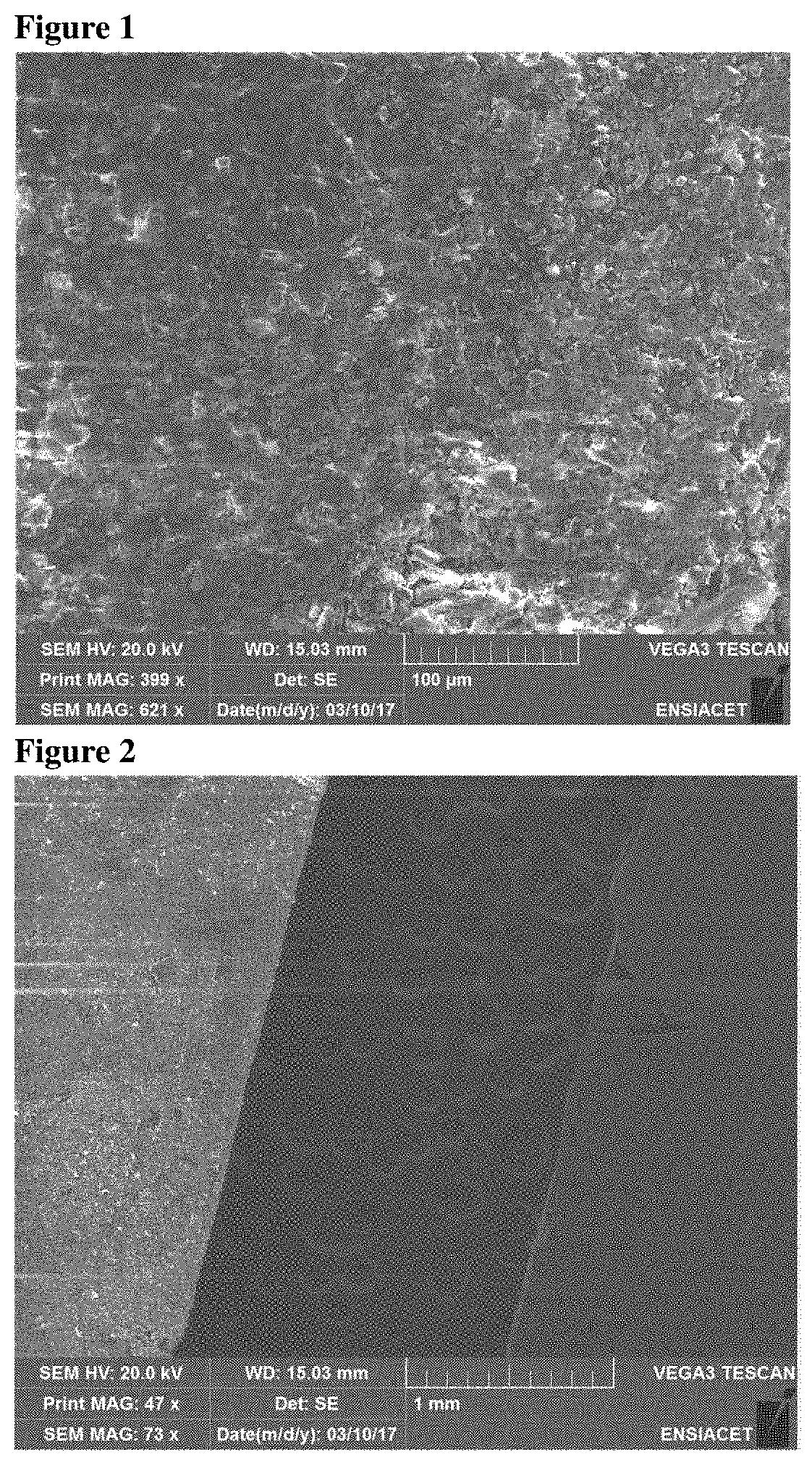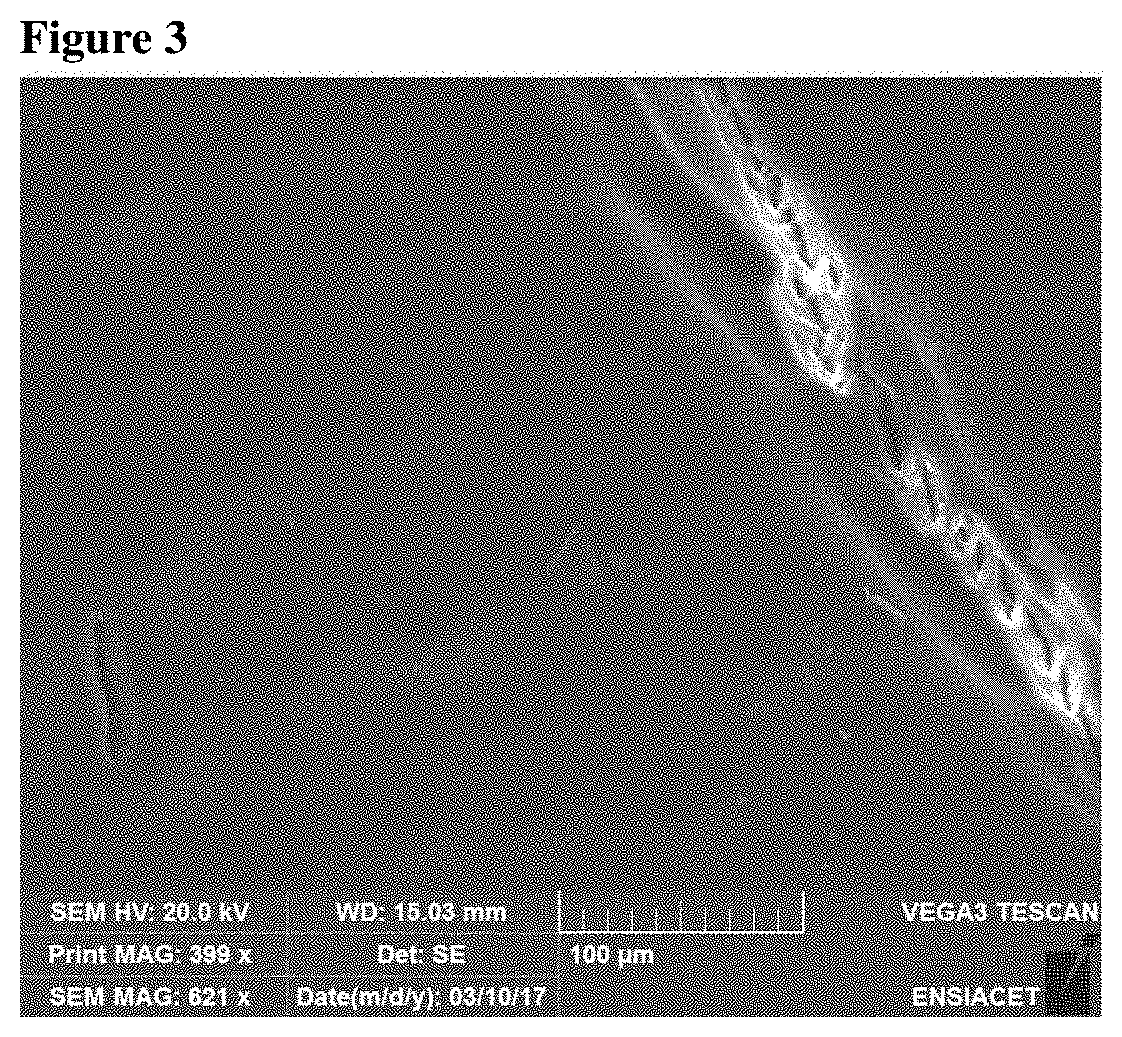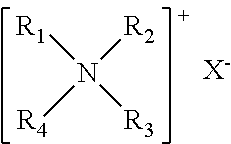Method for treating polyvinyl butyral (PVB)
- Summary
- Abstract
- Description
- Claims
- Application Information
AI Technical Summary
Benefits of technology
Problems solved by technology
Method used
Image
Examples
example 1
[0129]One hundred grams of pieces of PVB sheets obtained from crushing laminated glass (PVB fragments) are immersed in an aqueous solution 1 liter in volume comprising 53 grams sodium carbonate (0.5 mol) and 0.655 g cationic surfactant (0.0018 mol cetrimonium bromide close to its critical micelle concentration at the treatment temperature). The mixture is subjected to ultrasound produced by an Elmasonic P3OH tank with an ultrasonic power of 100 Watts delivered at a frequency of 80 kHz, for 1.5 hours. The temperature of the reaction medium stabilizes between 55 and 58° C. A conventional mechanical stirring device ensures dispersion of the PVB fragments in the medium.
[0130]When stopped, the pieces of treated plastic (PVB) settle and are collected, then are rinsed with water and air dried.
[0131]Measurement of the Residual Glass Content:
[0132]Estimation by counting glass shards under an optical microscope and analysis of the silicon content by EDX probe reveal a residual glass content o...
example 2
[0133]One hundred grams of pieces of PVB sheets obtained from crushing laminated glass (PVB fragments) are immersed in an aqueous solution 1 liter in volume comprising 69 grams potassium carbonate (0.5 mol) and 2 g cationic surfactant (0.0063 mol cetrimonium chloride close to its critical micelle concentration at the treatment temperature). The mixture is subjected to ultrasound produced by an Elmasonic P30H tank with an ultrasonic power of 120 Watts delivered at a frequency of 37 kHz, for 1.5 hours. The temperature of the reaction medium stabilizes between 55 and 58° C. A conventional mechanical stirring device ensures dispersion of the PVB fragments in the bath.
[0134]When stopped, the pieces of treated plastic (PVB) settle and are collected, then are rinsed with water and air dried.
[0135]Measurement of the Residual Glass Content:
[0136]Estimation by counting glass shards under an optical microscope and analysis of the silicon content by EDX probe reveal a residual glass content of ...
example 3
[0137]One hundred grams of pieces of PVB sheets obtained from crushing laminated glass (PVB fragments) are immersed in an aqueous solution 1 liter in volume comprising 53 grams sodium carbonate (0.5 mol) and 0.655 g cationic surfactant (0.0018 mol cetrimonium bromide close to its critical micelle concentration at the treatment temperature). The mixture is subjected to ultrasound produced by an Elmasonic P3OH tank with an ultrasonic power of 120 Watts delivered at a frequency of 37 kHz, for 0.5 hours in the water-filled tank. The ultrasound frequency is then changed to the value of 80 kHz for 0.5 hour at the ultrasonic power of 100 Watts. The temperature of the reaction medium stabilizes between 55 and 58° C. A conventional mechanical stirring device ensures dispersion of the PVB fragments in the bath throughout the operation.
[0138]When stopped, the pieces of treated plastic (PVB) settle and are collected, then are rinsed with water and air dried.
[0139]Measurement of the Residual Gla...
PUM
| Property | Measurement | Unit |
|---|---|---|
| Temperature | aaaaa | aaaaa |
| Temperature | aaaaa | aaaaa |
| Temperature | aaaaa | aaaaa |
Abstract
Description
Claims
Application Information
 Login to View More
Login to View More - R&D
- Intellectual Property
- Life Sciences
- Materials
- Tech Scout
- Unparalleled Data Quality
- Higher Quality Content
- 60% Fewer Hallucinations
Browse by: Latest US Patents, China's latest patents, Technical Efficacy Thesaurus, Application Domain, Technology Topic, Popular Technical Reports.
© 2025 PatSnap. All rights reserved.Legal|Privacy policy|Modern Slavery Act Transparency Statement|Sitemap|About US| Contact US: help@patsnap.com



